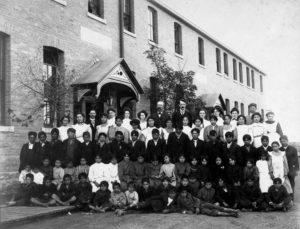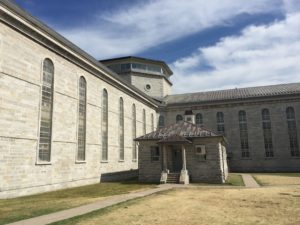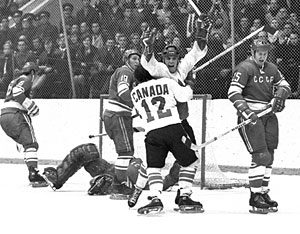At Parliament Hill, the small shoes and teddy bears that surround the Centennial Flame are weather-beaten. They have been there since the discovery of 215 unmarked graves in Kamloops, British Columbia earlier this summer. Since then, the remains of hundreds more children have been found at former residential schools.
Each day these tiny bits of children’s clothing are viewed by thousands of visitors to Canada’s capital, a stark reminder of Canada’s tragic residential school history. As the country prepares for its first National Day of Truth and Reconciliation on September 30, Canadians are trying to come to grips with this history, a truth that was known but somehow stayed out of the Canadian conscience for decades.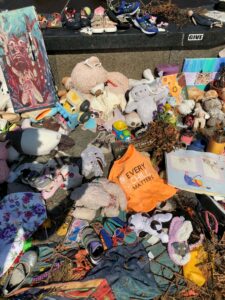
“We knew,” says Ry Moran, founding Director of the National Centre for Truth and Reconciliation and now the first Associate Librarian for Reconciliation at the University of Victoria. Moran was on the front line of reviewing residential school survivor stories during the work of the Truth and Reconciliation Commission led by his Honour, Murray Sinclair.
Through this work, Moran and his team reviewed more than 7,000 statements, recording many of them on video, an emotional experience which he says has changed him forever. “You can not help but be moved, and to see the injustices of this country laid bare. We have to as individual Canadian citizens come to understand what happened in residential schools,” says Moran.
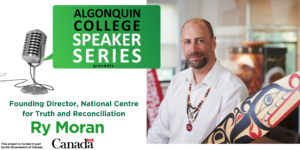
Moran will be speaking on Canada’s Residential School Tragedy at a virtual Algonquin College Pembroke Campus Speaker Series on Tuesday, September 14 at 7 p.m. The hour-long session will include a question-and-answer period, but it will mostly be an opportunity for Moran to share the truth of what happened at residential schools. “Whether it is comfortable or not, it is the truth. A great wrong was done to communities, to families, to those children by ignoring their human rights. That great wrong is what Canadians have to understand,” emphasizes Moran.
The Truth and Reconciliation Commission issued 94 calls to action when it released its final report in 2015. Among them was recommendation number 80 to establish as a statutory holiday, a National Day to honour survivors, their families and communities and to ensure public commemoration of the history and legacy of residential schools.
The commission deemed this national day as being a vital component of the reconciliation process, choosing a day that had already gained traction because of the story it represented. Initiated in 2013 in Williams Lake, British Columbia, Orange Shirt Day on September 30 was established to remember the story of a little girl, Phyllis Webstad, who on her first day attending a residential school had her new orange shirt taken away. The shirt had been given to her by her Grandmother and was never returned. As an adult, Webstad shared this story, describing how deeply hurt she was but that “no one cared and I felt like I was worth nothing.”

Ry Moran, Founding Director of the National Centre for Truth and Reconciliation is interviewed by Algonquin College Manager of Community and Student Affairs on Your TV Ottawa Valley (Cogeco Cable) about Canada’s Residential School past and the impact these schools have had on Indigenous peoples and communities.
In his home office, Moran has an orange shirt and an Indigenous blanket hanging from his wall. The blanket was given to Moran shortly after the National Centre was created at the University of Manitoba where a much larger version of the blanket is on display. The blanket and the shirt remind him of all of the children who were affected by residential schools, whether they experienced them first hand or have been impacted by the legacy impact of the schools on Indigenous families and communities.
“The history has been present, but frankly, Canadians have not been paying attention. We have to care more,” says Moran.
Moran believes Canadians are now paying attention. He cites more access to public education about Indigenous history and a lot of brave people speaking out and sharing their stories as a catalyst for a public discourse that is long overdue. But, he also says it is just the beginning, offering this advice to Canadians.
“Listen and follow Indigenous thought leaders, get informed, get involved, stand up for injustices and make it your business,” says Moran. That’s what Moran is doing. As a member of the Red River Metis and through his work with the Truth and Reconciliation Commission, he has made many connections over the past decade and continues to learn more about his heritage and his country. As he learns, he shares, becoming one of the important voices to ensure the calls to action are implemented.
In Ottawa, the Centennial Flame was first lit in 1967 to commemorate the county’s one-hundredth anniversary. It has been a place where Canadians have had their picture taken in front of the back-drop of the Peace Tower and Centre Block, the centre of our country’s government.
Today, the Flame has become a focal point for people to express their remorse for what happened at residential schools. The children’s clothing, including orange t-shirts, that surround the flame reminds us of Phyllis Webstad, the little girl who was forcibly taken from her home, stripped of her culture, her language and her identity. She survived. Many did not. Knowing this truth brings meaning to the message of orange shirt day – every child matters.
Post by: Jamie Bramburger is the Manager of Community and Student Affairs at Algonquin College’s Pembroke Waterfront Campus. Ry Moran will also be presenting at the College’s Fall Business Leadership conference on Monday, October 25. During his virtual session, Moran will discuss how to bring truth and reconciliation into the workplace.

